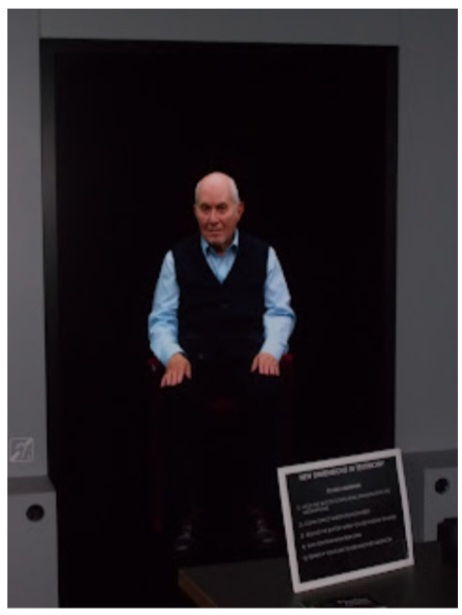Earlier in the summer I answered a question posed on a Facebook group called History Majors[i] about history and AI in the future. I was quite proud of my answer, this is a revised and extended version of that answer. I posted a link to the FB group page if you would like to see the original post.
A few years ago I visited the Holocaust Museum in DC.[ii] One of the exhibits was a beta program where they had interviewed survivors for hours and hours and uploaded into a computer interface. This was Dimensions In Testimony[iii] a program sponsored by USC: SHOAH Foundation. There was a holographic image of the person and when you asked questions to the image, the computer matched your question to a story that the interviewee told during their interview.
I would imagine that future iterations of AI will be able to extrapolate a life like image of historical figures using busts, portraits, and photographs to render a life like image. This may even be done today with more modern figures like Harry S. Truman or John F. Kennedy who were photographed and filmed for extended periods of time. This image would be able to move and talk to guests as hologram figures. AI would be able to gather primary sources such as letters and diaries and then be able to answer questions as that historical figure might. Thus far AI technology has not been able to speak, that may change in time.
The example that I see in my mind is George Washington walking into the Mount Vernon welcome center and greet guests to his home.
AI has gotten a lot of press lately (mostly negative) since Hollywood has screeched to a halt with the Writers Guild and SAG-AFTRA strikes. There are some legalities to work through and technological advances to work out. AI would be an interesting addition for museums and historical sites to use in their tours. My hope is that museums seriously look at new technologies to present historical research to the public.



No comments:
Post a Comment